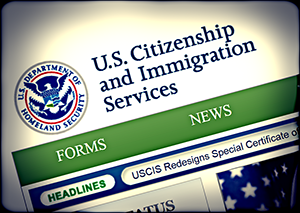.One of the federal programs that comes up for renewal — or death — at the end of this month levies an extra $2,000 per H-1B visa charge on companies that use large numbers of H-1B workers.
The government carefully does not publish data on this matter, but my best guess is that it is worth rather more than $100 million annually to U.S. Citizenship and Immigration Services, which collects fees for approved H-1B petitions.

If you were an executive of an enterprise with a yearly budget of $3.3 billion (as does USCIS for FY 2015) and the company was facing a contract deadline within a month that would eliminate $100 million in income, wouldn't you do everything in your power to get that contract extended? You bet you would.
The agency may be quietly seeking for such an extension, but my sources on the Hill indicate that there is no visible activity toward this end, either by the administration or congressional initiatives. No member of Congress, for example, has introduced such a bill, according to Interpreter Releases, the immigration bar's trade paper. The extension of these fees, however, could be attached as a rider to some other legislation, such as an appropriations bill or a continuing resolution for the general funding of the government.
The extra fees program (which also extends to some L-1 employers) was set in motion in 2010 by Congress as a gesture to the restrictionists — why not charge the Indian body shops such as Tata and Infosys more for the visas and send the money off to DHS for drones and border patrol agents? The fees (in fact) would do nothing to discourage the use of the H-1B program, and would not touch the Microsofts and Googles of the world, while the concepts of the drones would indicate a desire for 21st Century enforcement techniques, as I reported at the time.
This was another theatrical flourish from Sen. Chuck Schumer (D-N.Y.), who is expected to be the next leader of the Senate Democrats.
The duration of the program was for three years; then it was extended for two more in 2013.
Did those fees go through USCIS and then on to Immigration and Customs Enforcement (ICE) for the drones and the agents? Or did they stay with USCIS to help fund the DACA program, the short-term, administrative amnesty program for young and relatively young illegal aliens? And how much was collected from this source? I do not think that the answers are knowable from the public record.
The fees are for successful initial filings for H-1B employees and for those transferring from one H-1B employer to another. They apply to employers with 50 or more employees in the United States and with more than 50 percent of their workers in H-1B or L-1 status. (The L-1 visas are for the employees of multi-national firms who have been transferred from overseas to a U.S. work site. If this kind of employer is using the L-1 visa, the extra fee is $2,250.)
Though the law is written in general terms, it primarily applies to the Indian outsourcing companies that rent programmers to U.S. corporations. U.S.-owned firms, such as Disney, Intel, and IBM, do hire large numbers of H-1Bs, but not to the extent that they reach the 50 percent threshold.
The Department of Homeland Security should be enthusiastic about the collection of these fees, as they require virtually no extra work for the staff. There are other, continuing fees on H-1B filings, so the work will be done whether the $2,000 extra fee is charged or not.
The $100 million estimate is my own, and probably is too conservative. If the fees were just levied on new H-1B workers, which come to 85,000 a year for corporations, and if, as Howard University professor and expert on this subject Ron Hira says, the Indian outsourcing firms obtain about half of the new H-1Bs, that would produce $85 million in extra fees alone. In addition there would be a considerable number of transfers and extensions.
When the fees were introduced, the Indian website NASSCOM grumbled that they would cost the Indian IT firms "up to $250 million a year". I would be delighted if my estimate is wrong and NASSCOM's is right.
For more on the complex fee structure for H-1B and L-1 visas, see this USCIS publication.
The fine print in that document shows that the extra H-1B and L-1 fees are not charged for H-1B-type workers from Chile and Singapore because of trade agreements with those countries. Fortunately we do not see many such workers, as Singapore is more prosperous than the United States and Chile produces relatively few high-tech workers.
But the no-extra-fee-for-these-workers factoid is just another small reminder that we should not let our immigration policies be ruled by trade treaties.
